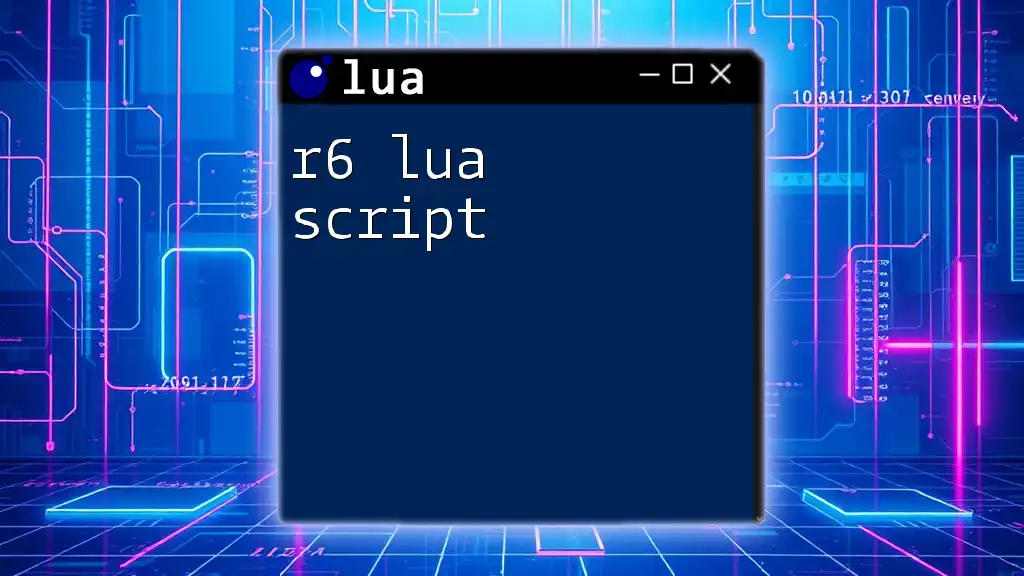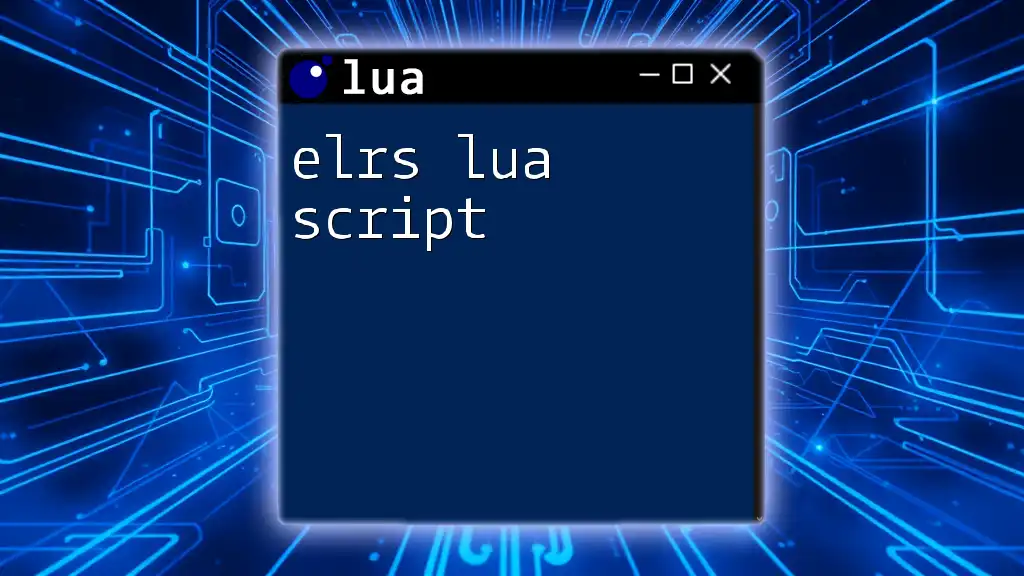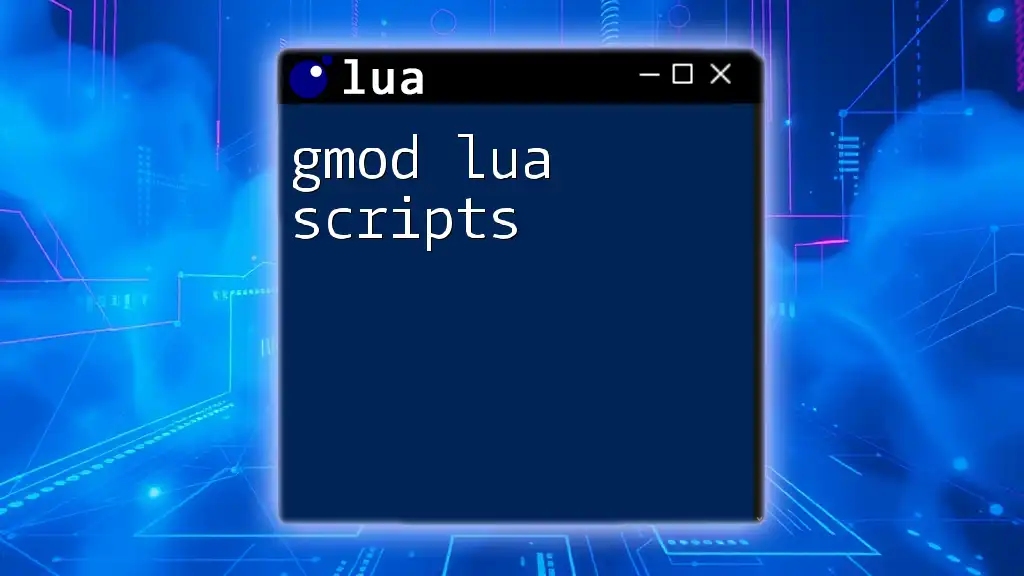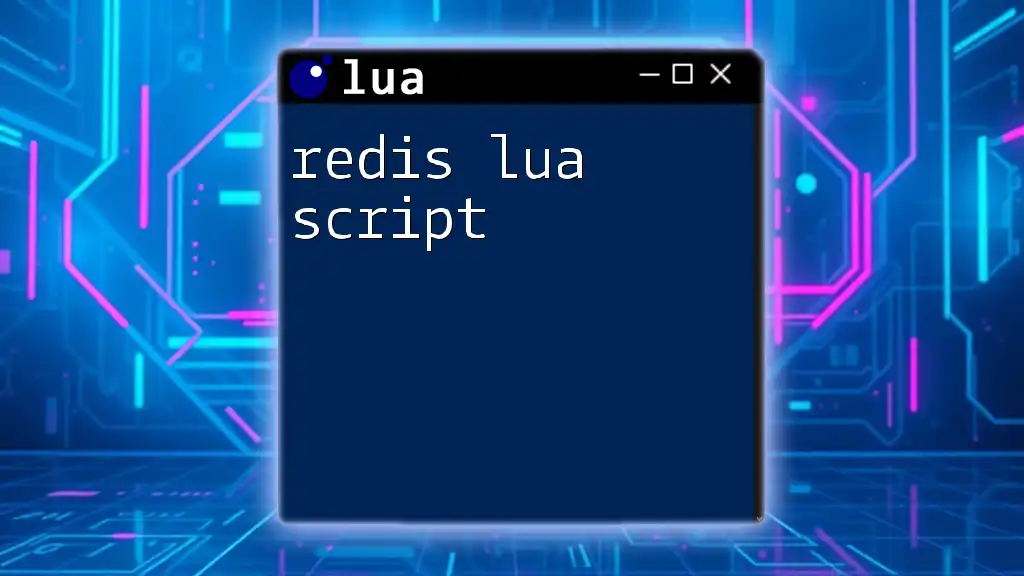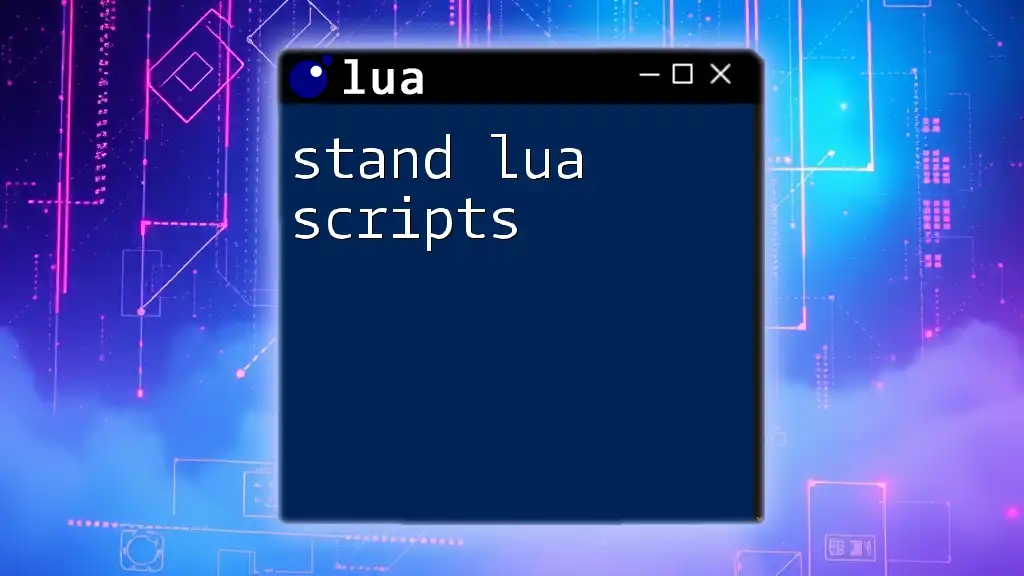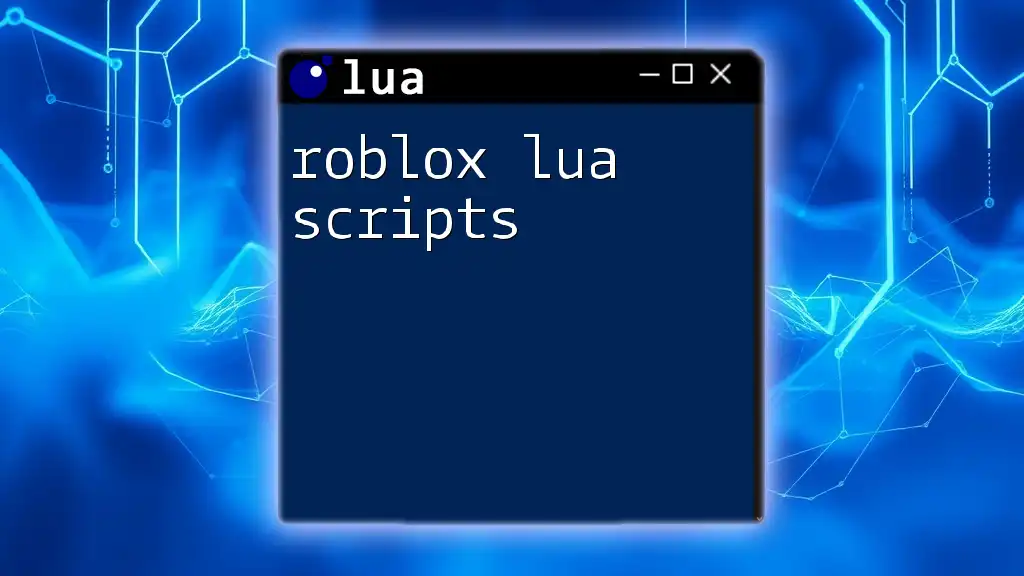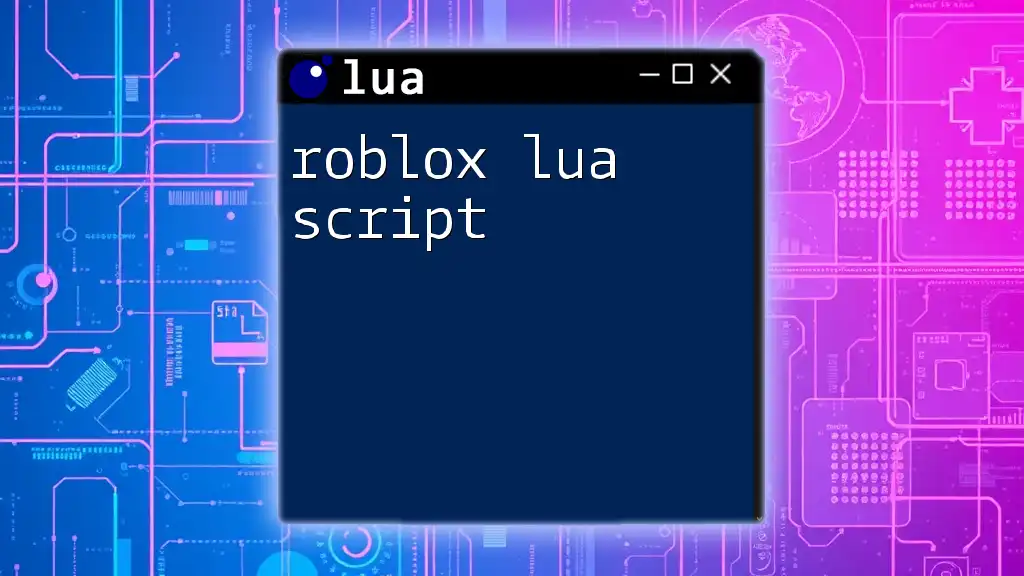Lua scripting is a lightweight, high-level programming language commonly used for game development and embedded systems, allowing users to embed features and create gameplay mechanics efficiently.
Here’s a simple code snippet demonstrating how to print "Hello, World!" in Lua:
print("Hello, World!")
Understanding Lua Scripting
What is Lua?
Lua is a powerful, efficient, lightweight, embeddable scripting language. It excels at manipulating data and is often used in scenarios where performance and flexibility are crucial. Key features of Lua include its simplicity, extensibility, and ability to integrate seamlessly with other programming languages, particularly C and C++. This versatility makes Lua an ideal choice for a variety of applications, from game development to embedding in software products.
History and Evolution of Lua
Developed in the early 1990s in Brazil, Lua was initially created to address specific issues in data processing. Over the years, it has evolved into a robust tool used across several industries, especially in video games, web applications, and embedded systems. Its lightweight nature allows developers to script complex behaviors without bogging down performance, earning it a beloved status in the game development community, particularly with engines like Love2D and Corona.

Getting Started with Lua
Setting Up Your Lua Environment
To start scripting with Lua, you first need to set up your environment. Here’s a simple guide:
-
Installation Instructions:
- Visit the [official Lua website](https://www.lua.org/) and download the latest version suited for your operating system.
- Windows: Use the provided installer or compile from source.
- macOS/Linux: Typically, you can use package managers like Homebrew (`brew install lua`) for macOS or APT for Ubuntu (`sudo apt-get install lua5.3`).
-
Overview of IDEs and Text Editors:
- Popular options include ZeroBrane Studio (specifically designed for Lua), Visual Studio Code (with Lua extensions), and Sublime Text. Choose an editor that fits your workflow to maximize coding efficiency.
Basic Syntax and Structure
Understanding the Lua syntax is essential for writing effective scripts. Lua’s syntax is quite approachable for beginners. Here are some foundational aspects:
- Comments: Use `--` for single-line comments and `--[[ ... ]]` for multi-line comments.
Example of comments:
-- This is a single-line comment
--[[
This is a
multi-line comment
]]
- Variables and Data Types: Lua has dynamic typing, allowing you to define variables without specifying their type.
Example of variable declarations:
local name = "Lua"
local version = 5.4
- Control Structures: Lua provides standard control flow constructs.
Example of a conditional structure:
if version >= 5.0 then
print(name .. " is modern.")
else
print(name .. " is outdated.")
end
- Loops: There are several loop structures in Lua, including `for`, `while`, and `repeat`.
Example of a simple loop:
for i = 1, 5 do
print("Number: " .. i)
end
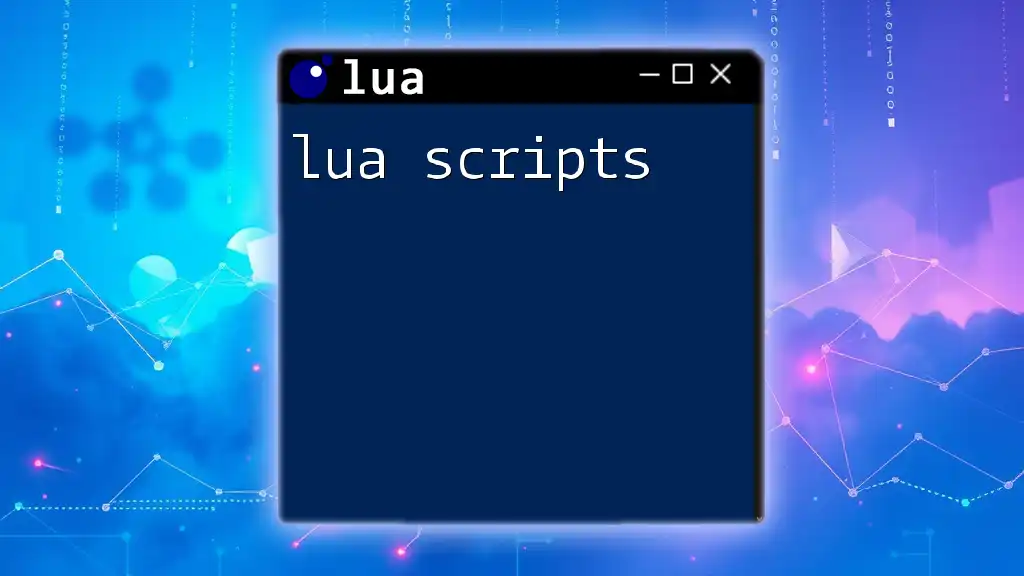
Working with Lua Tables
Introduction to Tables
Tables are the primary data structure in Lua, functioning as arrays, dictionaries, and objects. They are incredibly versatile.
Creating a simple table:
local fruits = {"apple", "banana", "cherry"}
print(fruits[1]) -- Output: apple
Manipulating Tables
Tables can store mixed data types and can be modified easily.
- Common Methods and Functions:
- You can add elements using the `table.insert()` function and remove them using `table.remove()`.
Example of adding and removing elements:
table.insert(fruits, "date") -- Adding an element
print(fruits[4]) -- Output: date
table.remove(fruits, 1) -- Removing the first element
print(fruits[1]) -- Output: banana
- Nested Tables: Lua allows creating tables within tables.
Example of a nested table:
local students = {
{name = "Alice", age = 20},
{name = "Bob", age = 22}
}
print(students[1].name) -- Output: Alice
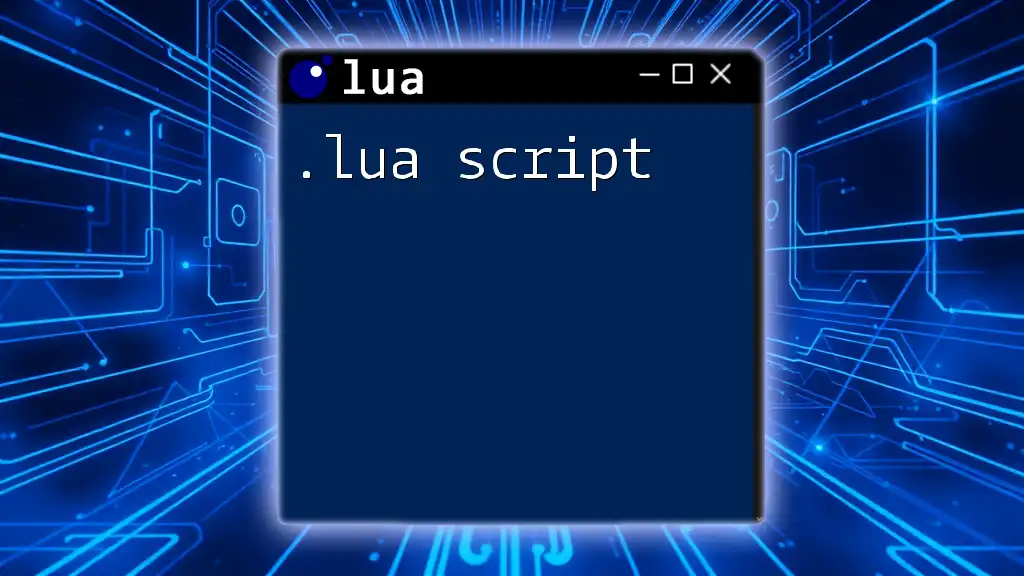
Functions in Lua
Defining Functions
Functions in Lua are first-class values and can be assigned to variables.
Creating a simple function:
function factorial(n)
if n == 0 then
return 1
else
return n * factorial(n - 1)
end
end
print(factorial(5)) -- Output: 120
Closures and Anonymous Functions
A closure is a function that retains access to its enclosing scope even when called outside of that scope. Anonymous functions (functions without a name) are often used in such contexts.
Creating an anonymous function:
local add = function(a, b)
return a + b
end
print(add(3, 4)) -- Output: 7
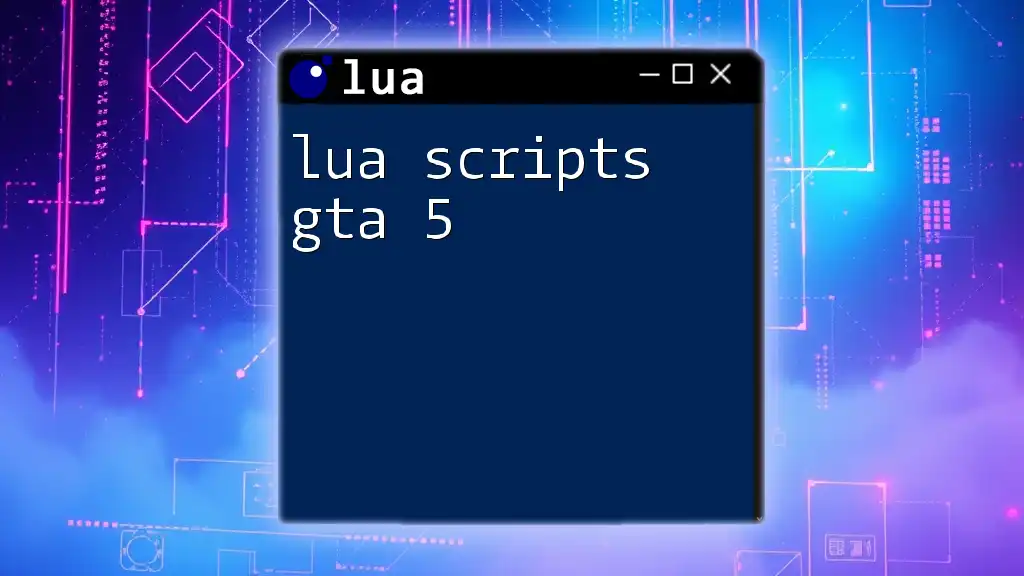
Error Handling in Lua
Using pcall and xpcall
Lua provides built-in functions to handle errors gracefully. `pcall` (protected call) allows you to call a function and catch errors without crashing your script.
Example of using pcall:
local status, result = pcall(function()
error("This is an error")
end)
if not status then
print("Caught an error: " .. result)
end
Custom Error Handling
You can also create custom error messages using the `error()` function.
Example of raising a custom error:
function checkAge(age)
if age < 18 then
error("Age must be at least 18.")
end
end
checkAge(16) -- This will raise an error
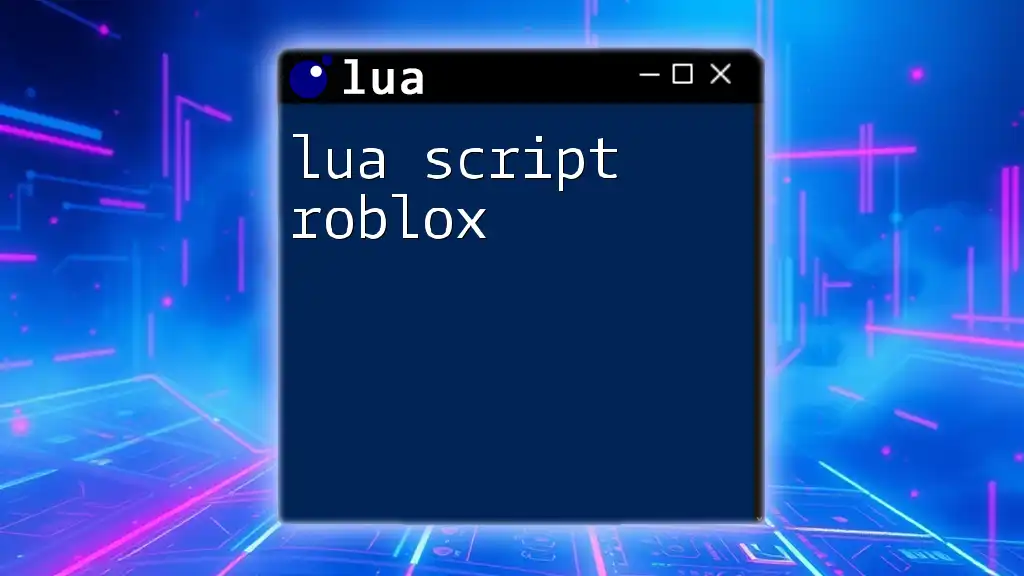
Lua Libraries and Modules
Built-in Libraries
Lua comes with several built-in libraries such as string, math, table, and os. Each provides a set of functions for performing various tasks.
Examples:
- String manipulation:
local str = "Hello World"
print(string.upper(str)) -- Output: HELLO WORLD
- Mathematical functions:
print(math.random()) -- Random number between 0 and 1
Creating and Using Modules
Modules in Lua are a way to organize your code into reusable components. You create a module by returning a table with functions.
Example of a simple module:
-- mymodule.lua
local mymodule = {}
function mymodule.add(a, b)
return a + b
end
function mymodule.subtract(a, b)
return a - b
end
return mymodule
To use this module:
local mymath = require("mymodule")
print(mymath.add(5, 3)) -- Output: 8

Practical Applications of Lua Scripting
Lua in Game Development
Lua is widely used in the game development industry as a scripting language, providing developers quick and flexible means to modify game behaviors. Popular engines like Love2D and Corona SDK allow developers to create games rapidly using Lua.
An example of a game script might involve defining player actions or game state management.
Automation and Scripting
Lua can also serve as a general-purpose scripting language for automating tasks. Its lightweight design makes it an ideal choice for creating scripts that perform repetitive actions or manipulate data.
Example of a basic file manipulation script:
local file = io.open("example.txt", "w")
file:write("Hello, world!")
file:close()

Best Practices in Lua Scripting
Writing Clean and Maintainable Code
To ensure your Lua scripts are maintainable, focus on writing clear and organized code. Use comments judiciously, ideally to explain why certain decisions were made rather than what the code is doing.
Performance Optimization
While Lua is designed to be efficient, developers can inadvertently introduce bottlenecks. Avoid excessive memory allocations, and strive for efficient table handling to keep performance optimal.
Example of efficient table usage:
local items = {}
for i = 1, 1000000 do
items[i] = i
end
-- Process items
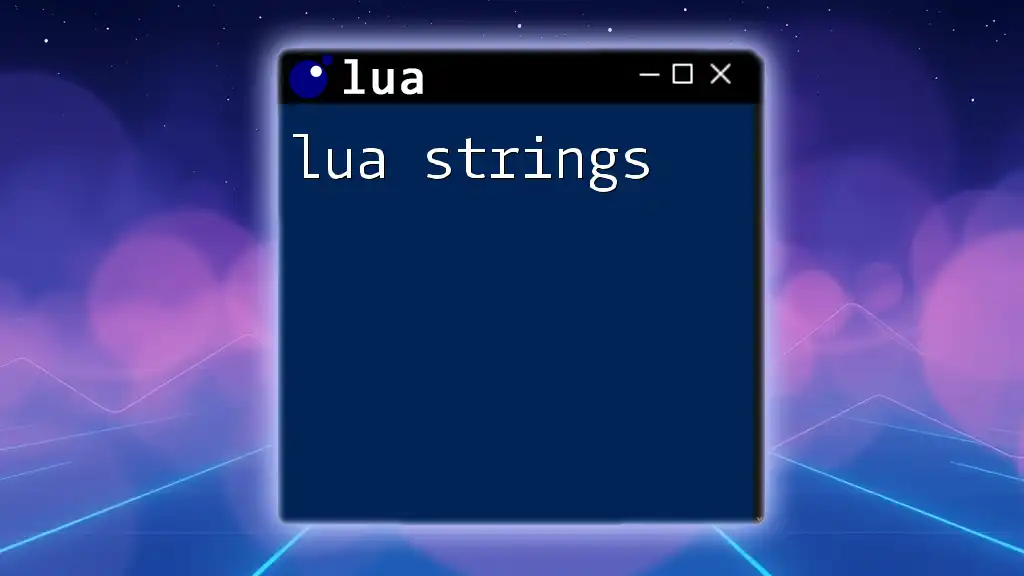
Conclusion
Lua scripting offers a versatile and powerful framework for developing a wide range of applications. From game development to automation tasks, the principles and practices outlined in this guide will set you on the path to mastering Lua. With its clean syntax and robust features, Lua remains a go-to language for developers looking to enhance their productivity. Embrace its capabilities, and you’ll find Lua to be an indispensable tool in your programming toolkit.










